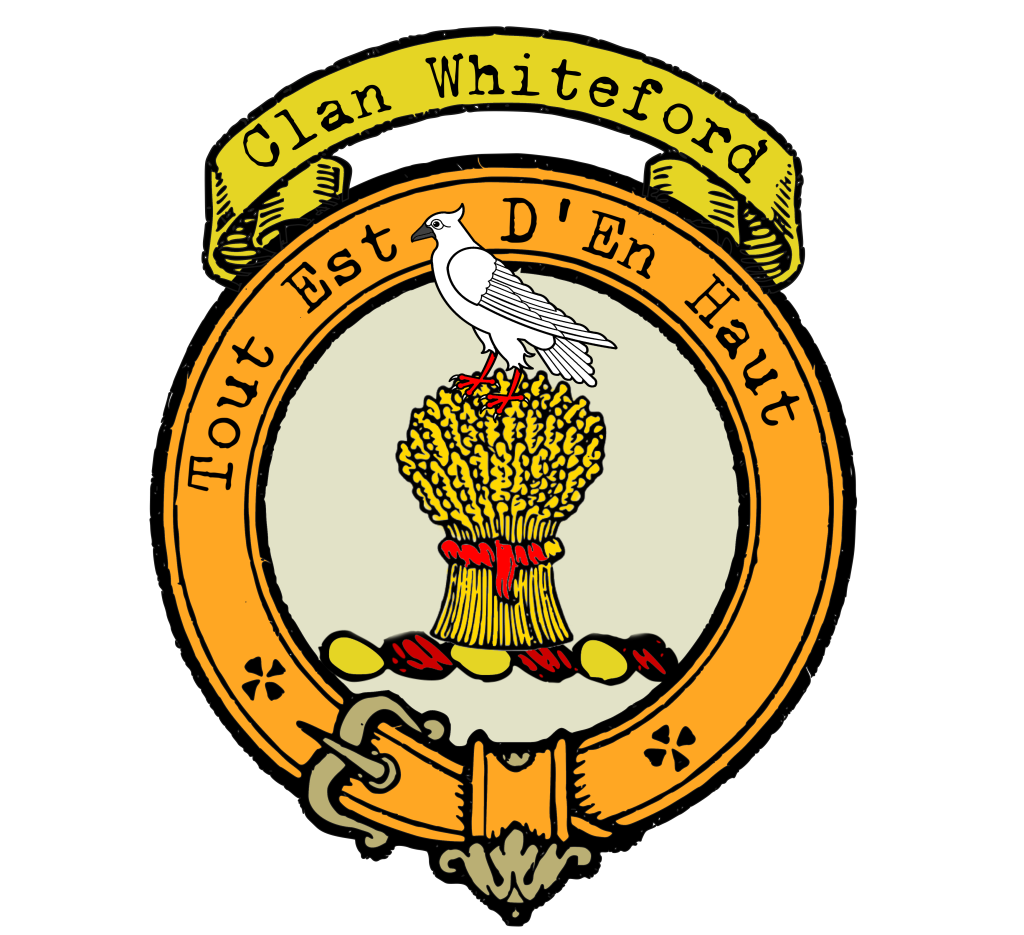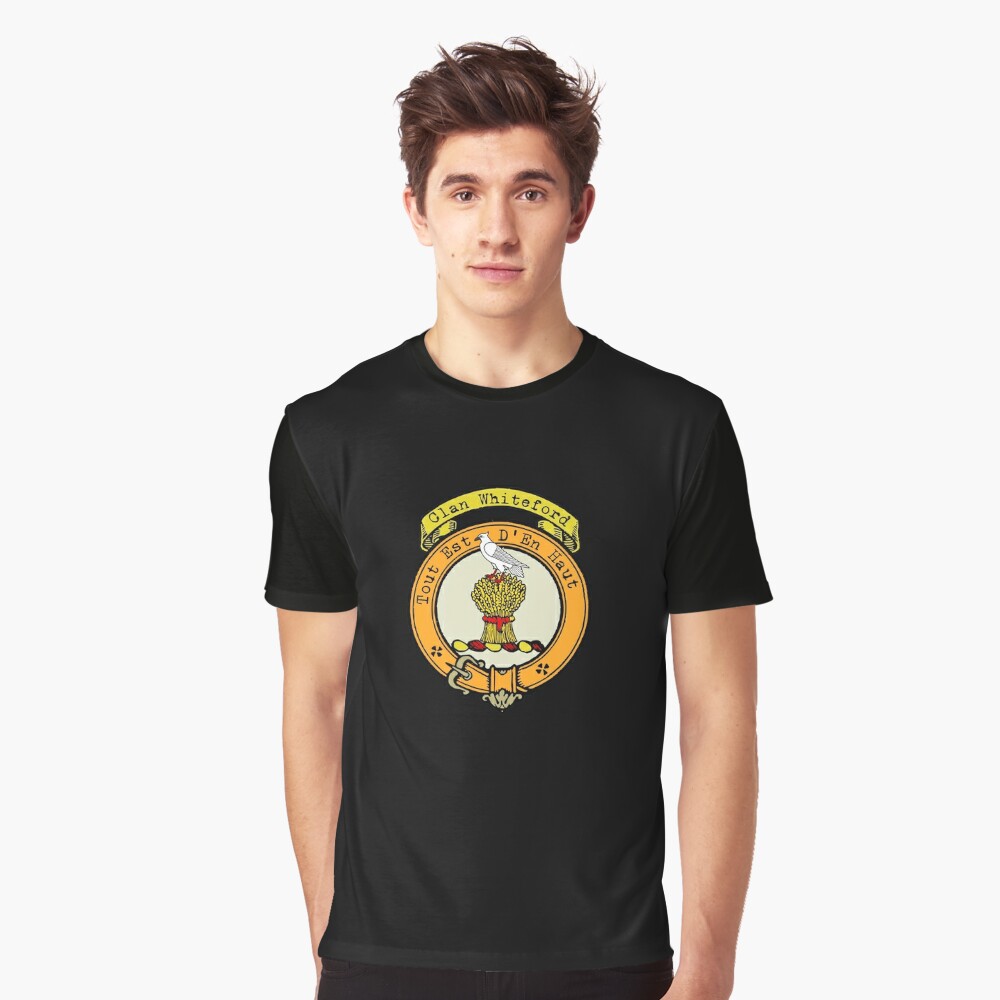Clan Whiteford
|
|
CREST: A garb Or standing upright and thereon a dove Proper MOTTO: Tout est d’en haut TRANSLATION: All is from above VARIATIONS: N/A |
| The story of Clan Whiteford begins with its name. The exact origins of the name “Whiteford” are somewhat shrouded in mystery. However, it is believed that “Whiteford” could be derived from the Old English word “whita,” which was a common personal name. The name likely found its way into Scottish history when a certain Walter Whiteford distinguished himself at the Battle of Largs in 1263. As a reward for his valor, he was granted lands near the river Cart near Paisley by Alexander, High Steward of Scotland.
Walter Whiteford’s name appears in historical records as one of the witnesses to a charter by Alexander III in the same year as the Battle of Largs. This indicates the family’s presence and influence during this period. In 1296, records show that the sheriff of Lanark was ordered to restore the lands of John de Wheteford, further establishing the family’s enduring presence in the region. One of the most intriguing aspects of Clan Whiteford’s history is its coat of arms, which prominently features two red wheatsheaves. Legend has it that this design commemorates a victory by a Whiteford over the English during the time of Robert the Bruce. The story goes that a member of the Whiteford clan led a surprise attack on the English by creating a causeway over a river using a great quantity of wheatsheaves. While the historical accuracy of this story may be debated, it has become an integral part of the clan’s lore. As the years passed, Clan Whiteford grew in both power and reputation. They acquired substantial estates and cemented their position by forming alliances through marriage with influential families such as Semple, Somerville, and Houston. These alliances not only increased their standing but also ensured the family’s continued prominence in Scottish society. The principal stem of Clan Whiteford eventually met its end in 1689. However, the family name continued through the Whitefords of Blairquhan, who were descendants of a younger son of Whiteford of that Ilk. James Whiteford, a member of this branch, married into the Blair family and saw his son, Adam, created a baronet in 1701. One of the most colorful characters in Clan Whiteford’s history is Caleb Whiteford, the only son of Colonel Charles Whiteford of Blairquhan. While he could not prove his legitimacy to inherit the baronetcy, Caleb’s life was filled with intriguing connections. He counted Dr. Samuel Johnson, Oliver Goldsmith, and David Garrick among his acquaintances and played a significant role in negotiating the peace settlement with America after the War of Independence. He was also a close friend of the American statesman Benjamin Franklin. While the baronetcy of the Whitefords of Blairquhan became dormant, the legacy of Clan Whiteford lives on. Major General Philip Whiteford, heir of the line to the Baronets of Blairquhan, continued the family’s tradition of distinguished military service and commanded Allied land forces in Norway during World War II. |
|
Citations:
|
|
Purchase @ Redbubble
Purchase @ Amazon.com
Purchase @ Amazon.co.uk

